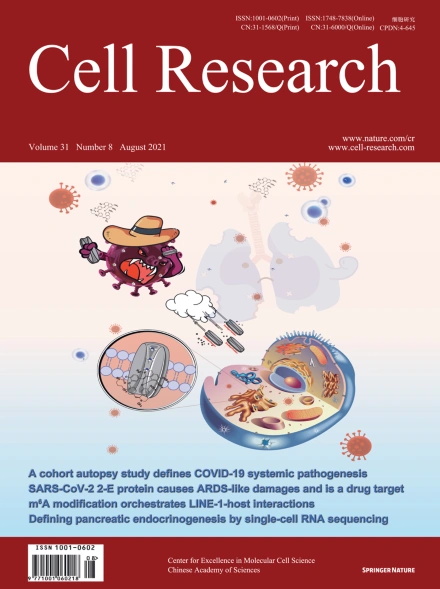
Advanced Search
Submit Manuscript
Advanced Search
Submit Manuscript
Volume 31, No 8, Aug 2021
ISSN: 1001-0602
EISSN: 1748-7838 2018
impact factor 17.848*
(Clarivate Analytics, 2019)
Volume 31 Issue 8, August 2021: 932-934
Cryo-EM structure of the AVP–vasopressin receptor 2–Gs signaling complex
Lei Wang1,2 , Jun Xu1 , Sheng Cao1 , Dapeng Sun2 , Heng Liu2 , Qiuyuan Lu1 , Zheng Liu1 , Yang Du1,* , Cheng Zhang2,*
1Kobilka Institute of Innovative Drug Discovery, School of Life and Health Sciences, Chinese University of Hong Kong, Shenzhen, Guangdong 518172, ChinaDear Editor,
The highly conserved neuropeptides arginine vasopressin (AVP) and oxytocin (OT) signal through a family of Class A G protein-coupled receptors (GPCRs), the AVP receptors V1aR, V1bR and V2R and the OT receptor OXTR.1,2 V2R is predominantly found in the kidney and plays a critical role in body fluid homeostasis.2 Among all AVP and OT receptors, V2R is the only one that activates the heterotrimeric Gs family to induce cAMP accumulation (Supplementary information, Fig. S1). More than 200 mutations of the V2R gene have been linked to X-linked congenital nephrogenic diabetes insipidus (NDI) and nephrogenic syndrome of inappropriate antidiuresis (NSIAD).2 V2R has also been the focus of intensive drug development efforts for urinary disorders.2 Desmopressin (DDAVP), a peptide analog of AVP, is currently used to treat central diabetes insipidus and primary nocturnal enuresis. V2R antagonist drugs, the vaptans such as tolvaptan, are used to treat hyponatremia and autosomal dominant polycystic kidney disease (ADPKD).
https://doi.org/10.1038/s41422-021-00483-z